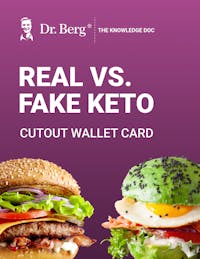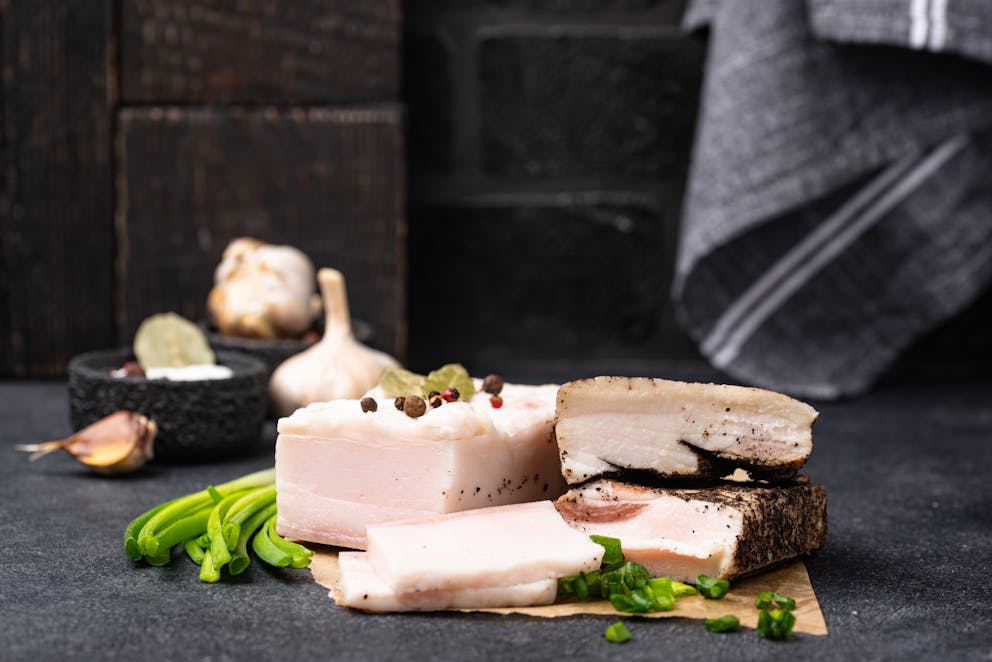What Is Lard?

How to Read Your Body
Learn to recognize common symptoms and uncover their underlying health issues
Understand the signs of nutrient deficiencies to manage your health
Explore the four metabolic body types and the core factors that influence them
Interpret your body's signals from head to toe to identify potential health concerns

How to Read Your Body
Learn to recognize common symptoms and uncover their underlying health issues
Understand the signs of nutrient deficiencies to manage your health
Explore the four metabolic body types and the core factors that influence them
Interpret your body's signals from head to toe to identify potential health concerns

How to Read Your Body
Learn to recognize common symptoms and uncover their underlying health issues
Understand the signs of nutrient deficiencies to manage your health
Explore the four metabolic body types and the core factors that influence them
Interpret your body's signals from head to toe to identify potential health concerns

How to Read Your Body
Learn to recognize common symptoms and uncover their underlying health issues
Understand the signs of nutrient deficiencies to manage your health
Explore the four metabolic body types and the core factors that influence them
Interpret your body's signals from head to toe to identify potential health concerns

How to Read Your Body
Learn to recognize common symptoms and uncover their underlying health issues
Understand the signs of nutrient deficiencies to manage your health
Explore the four metabolic body types and the core factors that influence them
Interpret your body's signals from head to toe to identify potential health concerns

How to Read Your Body
Learn to recognize common symptoms and uncover their underlying health issues
Understand the signs of nutrient deficiencies to manage your health
Explore the four metabolic body types and the core factors that influence them
Interpret your body's signals from head to toe to identify potential health concerns

How to Read Your Body
Learn to recognize common symptoms and uncover their underlying health issues
Understand the signs of nutrient deficiencies to manage your health
Explore the four metabolic body types and the core factors that influence them
Interpret your body's signals from head to toe to identify potential health concerns

Keto vs. Non-Keto
Quickly compare keto-friendly foods with non-keto options for easy reference
Use this wallet card to make informed food choices while shopping or dining out
Identify fake keto foods and ingredients that you should avoid
Simplify decision-making with clear, practical guidelines

Keto vs. Non-Keto
Quickly compare keto-friendly foods with non-keto options for easy reference
Use this wallet card to make informed food choices while shopping or dining out
Identify fake keto foods and ingredients that you should avoid
Simplify decision-making with clear, practical guidelines

Keto vs. Non-Keto
Quickly compare keto-friendly foods with non-keto options for easy reference
Use this wallet card to make informed food choices while shopping or dining out
Identify fake keto foods and ingredients that you should avoid
Simplify decision-making with clear, practical guidelines

Keto vs. Non-Keto
Quickly compare keto-friendly foods with non-keto options for easy reference
Use this wallet card to make informed food choices while shopping or dining out
Identify fake keto foods and ingredients that you should avoid
Simplify decision-making with clear, practical guidelines

Keto vs. Non-Keto
Quickly compare keto-friendly foods with non-keto options for easy reference
Use this wallet card to make informed food choices while shopping or dining out
Identify fake keto foods and ingredients that you should avoid
Simplify decision-making with clear, practical guidelines

Keto vs. Non-Keto
Quickly compare keto-friendly foods with non-keto options for easy reference
Use this wallet card to make informed food choices while shopping or dining out
Identify fake keto foods and ingredients that you should avoid
Simplify decision-making with clear, practical guidelines

Keto vs. Non-Keto
Quickly compare keto-friendly foods with non-keto options for easy reference
Use this wallet card to make informed food choices while shopping or dining out
Identify fake keto foods and ingredients that you should avoid
Simplify decision-making with clear, practical guidelines
Have you ever wondered what lard is? Pure lard is pig fat that can be used in place of butter or shortening for anything from deep frying to baking. It can create flaky layers in biscuits or pie crust and can add richness to just about any dish.
Lard and other animal fats have gotten a bad reputation for causing clogged arteries, high cholesterol, and heart disease.
Let’s take a look at how lard can be a healthy addition to a keto diet—and why it isn’t as bad as you may think.

What is lard made out of?
Pure lard is a cooking fat made from the fat of pigs. Lard has a high smoke point and a mild flavor, making it the perfect fat to cook with.
Before 1918—when the vegetable shortening Crisco was invented—home cooks used either lard or tallow as their primary cooking fat.
They used it for all of their cooking, from baking to deep frying. It was used in almost everything and was not considered an unhealthy ingredient.
Types of lard
There are a few different types of lard that you can typically find at your local butcher, farmer’s market, or grocery store.
Rendered lard
Most lard is made through a process called rendering. Pork is cooked slowly until the fat separates from the meat resulting in a semi-soft rendered fat that can be used for baking, frying, and other types of cooking.
Unrendered lard
Unrendered lard is simply the fatty parts of pork that have been cut away from the meat. Unrendered lard will have a stronger pork flavor than rendered lard, so it’s not the best option for baking.
Processed lard
Processed lard is lard that has been filtered, clarified, and hydrogenated. Hydrogenated lard is shelf-stable and solid at room temperature.
Leaf lard
Leaf lard comes from the leaf-shaped portion of fat around a pig’s kidneys. It’s very soft and creamy with a mild flavor, so it’s perfect for baked goods. Leaf lard is the highest quality lard available.
If you don’t want to buy lard, you can make your own lard in a slow cooker at home! The more slowly you cook your lard, the less pork flavor it will have.

Is lard keto-friendly?
Yes, lard is keto-friendly and it’s listed on the Healthy Keto® Food List.
Dietary fats are a critical part of a keto diet. On keto, you should get 65 to 75% of your total daily calories from fat.
Lard is a rich source of saturated and monounsaturated fat and contains no carbohydrates or sugar.
Lard can also help keep you full and satisfied between meals on a keto diet. This will make it easier to avoid snacking and will help keep you in ketosis.
Aside from ketone production, saturated animal fats have several health benefits. All of your fat-soluble vitamins can be found in animal fat. This is crucial for your immune system and the health of your hair, skin, eyes, and nails.
Lard is primarily made of pork fat, but you can get lard that is made from the fat of wild boars as well. This lard is rich in vitamin D3.
If you choose the more popular lard from pigs, try to look for organic, pasture-raised lard.
Lard and animal fats are rich in micronutrients and have many benefits. Check out this academic review of the health benefits of animal fats like lard.
Lard vs. vegetable oil: which is healthier?
When lard substitutes like vegetable shortening and hydrogenated vegetable oils were developed, they were marketed as being healthier than saturated fats like lard and tallow. They quickly replaced animal fats in the kitchen because of their health claims and long shelf-life.
Most vegetable oil is actually soybean oil—the term vegetable oil was chosen for marketing purposes.
Surprisingly, cooking oils like corn, canola, soy, and cottonseed oil can be very unstable, especially when heated. Vegetable oils produce massive amounts of oxidation which leads to free-radical damage and inflammation and contributes to insulin resistance.
Crisco vegetable shortening was considered a healthy substitute for lard until 2015, when the FDA banned trans fats. Companies were allowed three years to fully remove trans fats from their products.
While trans fats have been banned, they can still be created in the cooking process.
The process of heating cooking oils like canola oil, soybean oil, and cottonseed oil can create trans fat.
Pork fat and other cooking fats that come from animals are commonly associated with clogged arteries and high cholesterol, but this isn’t supported by evidence.
Vegetable oil has less saturated fat than lard, but that’s not necessarily a good thing. Lard is more stable, produces very little oxidation, and has a much higher smoke point.
Lard can also be beneficial for people with autoimmune conditions because it does not cause inflammation in the gut.

Key takeaways
Lard is a much healthier substitute for vegetable oils and shortening. It’s perfect for baking delicious treats, and a great way to add healthy fat with bioavailable nutrients to your diet.
Don’t be fooled by lard’s bad reputation!
FAQ
1. What is lard made out of?
Lard is a cooking fat, typically made from the rendered fat of pigs. There are different types of lard suitable for different culinary uses, including leaf lard, rendered lard, unrendered lard, and processed lard, which is shelf-stable. Some home cooks even make their own lard!
2. Is lard healthier than vegetable oil?
Yes. Animal fats like lard do not oxidize and cause free-radical damage in the body the way that vegetable oils do. Heated vegetable oils produce trans fats which have many health consequences.
When vegetable oils and shortening were developed, they were marketed as a healthier alternative to animal fats. This marketing was extremely successful and lasted a very long time.
3. Is lard keto-friendly?
Yes! Lard is a rich source of saturated and monounsaturated fat. This is important for ketone production on a keto diet. It can also help keep you full between meals!
4. What does lard taste like?
Depending on the type and preparation method of lard, it may or may not have a pork flavor. Rendered lard and leaf lard have a milder flavor and are better for baking. Unrendered lard will have more pork flavor and is better suited for enriching stews, slow-cooking meats, and braising vegetables.
5. How do you cook with lard?
Lard can be used as a substitute for fats, oils, butter, or shortening. It has a wide range of uses—it can be used to make baked goods or to fry or sauté meats and vegetables.
6. Is lard bad for your cholesterol?
No, lard is not bad for your cholesterol. Lard contains healthy cholesterol that is essential for your body.
7. Is the cholesterol in lard bad?
No, cholesterol is incredibly important for many functions in the body. It’s imperative for cognitive function and the production and release of bile.
8. Is lard the same as tallow?
No. Lard is made from pig fat, and tallow is the fat from cows or lamb. Both are healthy animal fats that can replace butter, oil, and other fats.
Previous blog
Shrink Your Enlarged ProstateTags

Popular
08/21/2024
56.3K views
02/23/2025
47.2K views
11/18/2024
284.3K views
03/18/2024
11/21/2022




